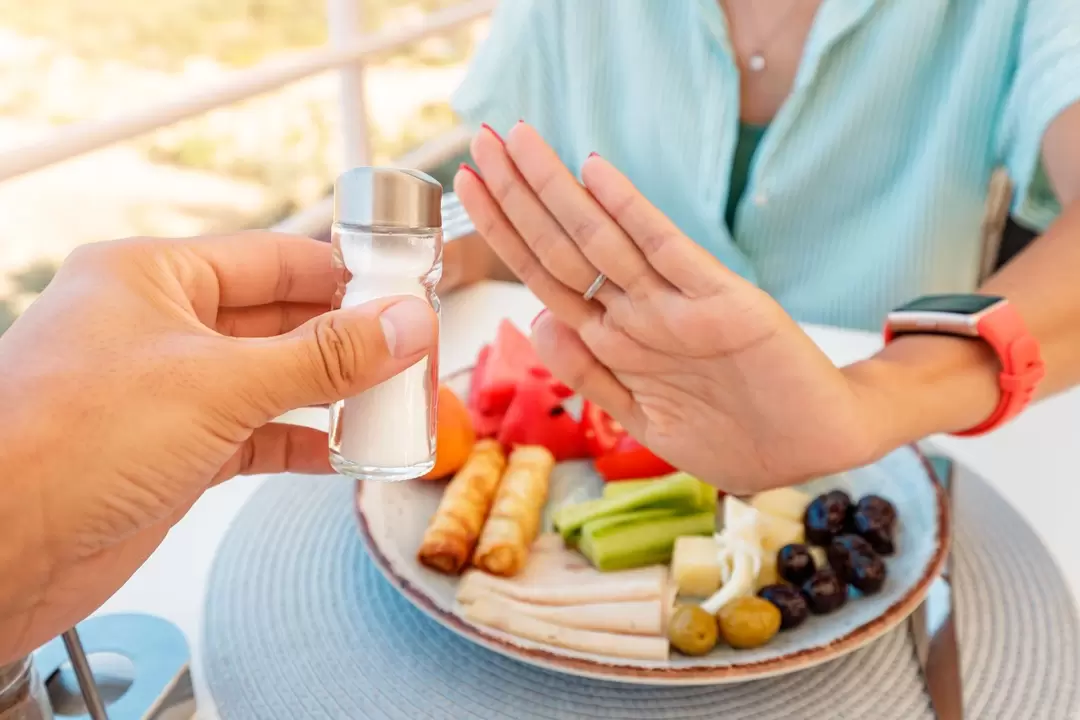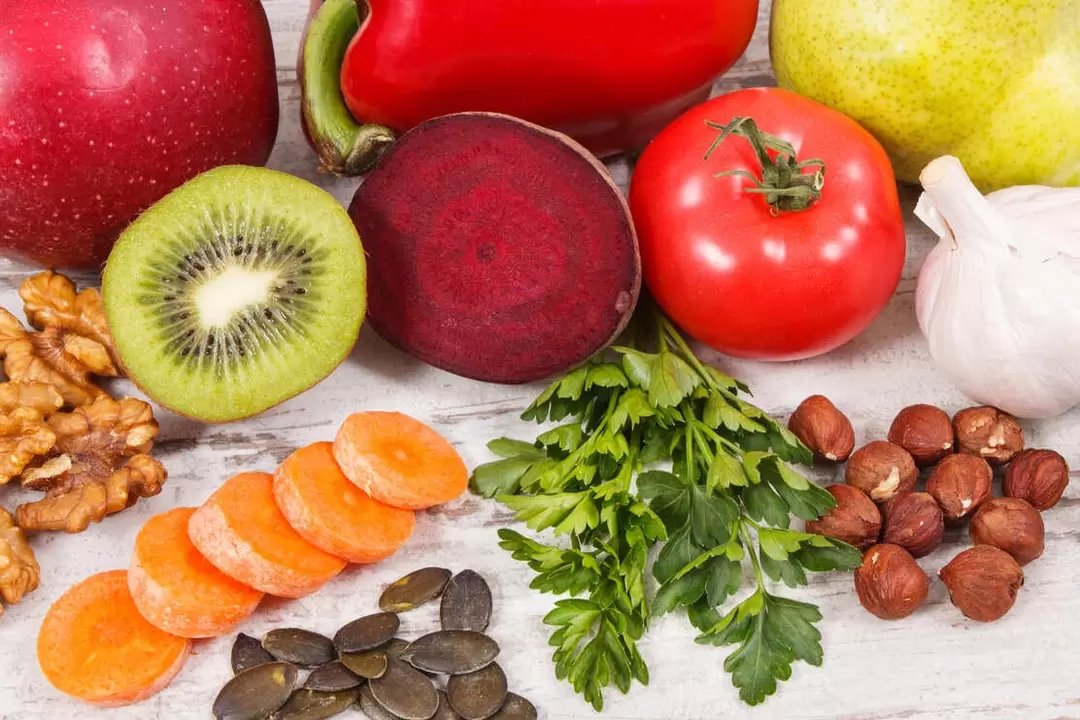Gout is a rheumatic disease caused by the deposition of uric acid salts in the joints. The clinical manifestations of the disease are pain, deformation of the affected joint, dysfunction and the formation of characteristic nodules (tophi).
Without treatment, the disease progresses over time, and salt deposits in the form of microcrystals begin to accumulate in the internal organs. Most often the kidneys are affected, which leads to the development of pyelonephritis, renal failure and other complications. The diagnosis is made based on symptoms and confirmed by puncture of the affected joint and x-ray. Treatment includes pharmacotherapy, a special diet, and physical therapy.
Basic principles of diet
An approximate menu is drawn up by the attending physician, individually for each patient, taking into account the form and severity of the disease, the presence of concomitant pathologies, the age of the patient and the characteristics of his body.
The goal of the diet is to minimize the level of uric acid in the body, which leads to an improvement in the patient's general well-being and improves his quality of life. Food products should not contain purines which, after entering the body, turn into uric acid.
It is recommended to include more fresh fruits and vegetables in your diet. The recipes are quite simple, the main thing is to prepare them correctly and not use ingredients from the list of prohibited foods.
Therapeutic nutrition helps the patient at home to quickly improve overall well-being, relieve unpleasant symptoms and even increase the duration of remission periods. Abandoning the diet, consuming spicy and fatty foods, alcohol (especially wine and beer), coffee, quickly increase the level of uric acid in the body, which leads to another attack of the disease. Therefore, it is necessary to constantly follow a diet. Proper nutrition during periods of remission and especially exacerbation will help avoid the development of a number of serious complications.
The patient should always have before his eyes a table of permitted foods, as well as recipes for preparing various dishes. This will help create the optimal menu based on the individual food preferences of each patient and taking into account the characteristics of his body.
It is important not only to use the right products, but also to follow a certain diet. You should eat often, but in small portions (split meals). Fasting and overeating are unacceptable, as this can provoke an attack of the disease. If you have excess weight, you need to get rid of it. But this should be done gradually; Sudden weight loss can have a negative impact on health, especially if the patient is no longer young.
We should not forget about the drinking regime. It is necessary to drink at least one and a half liters of fluid per day (up to three liters during periods of exacerbation). In addition to water, the consumption of compotes, mineral water, light tea, fruit drinks and rosehip decoction is allowed. It is better to drink not during meals, but between meals.
Prohibited products

You need to follow the diet for life and not just during flare-ups. The diet should be as balanced as possible. Dairy products and vegetables are allowed. It is important to drink enough fluids, as this speeds up the elimination of excess uric acid from the body.
With the help of a diet, you can not only alleviate the symptoms of the disease and reduce the frequency of flare-ups, but also normalize weight, reducing the load on the affected joints. The main rule is to exclude purine-rich foods from the diet.
These include:
- cakes and pastries;
- canned food;
- legumes;
- baking;
- offal;
- processed meat products (sausages, frankfurters, etc. );
- fatty fish;
- chocolate;
- spicy, salty, smoked, pickled foods;
- Fast food;
- mushrooms;
- any alcohol, but especially wine and beer;
- cocoa, strong black tea, coffee.
If metabolic disorders occur against the background of diabetes or atherosclerosis, it is necessary to carefully monitor the total calorie content of foods, the amount of fatty foods, cholesterol and sugar levels.
Authorized products

The gout diet is based on the principles of a healthy diet, so it is not very difficult to follow. The main thing is to get used to the changes in your diet. Then everything will be simpler. Prohibited foods should be completely excluded.
Allowed products include:
- dietary meats (rabbit, chicken, turkey);
- eggs (small quantities);
- fermented milk products;
- vegetable oils (flaxseed and olive oil are the best options);
- seafood;
- pasta, cereals;
- low-fat varieties of fish;
- fresh fruit and vegetables that are not included in the list of prohibited foods;
- jam, pastille, marshmallow;
- chocolate-free sweets;
- dried fruit (except raisins);
- Honey.
It is necessary to clearly understand that you will have to eat according to the above recommendations for the rest of your life. Violation of the diet and consumption of prohibited foods quickly provoke an exacerbation of the disease.
Diet for gout: table no. 6
Unfortunately, it is impossible to completely cure the disease, especially if its course is complicated by diabetes or obesity. However, following diet no. 6, you can quickly relieve exacerbations and reduce the frequency of relapses of the disease.
Nutritional characteristics of this diet:
- It is necessary to completely exclude from the menu foods rich in purines and oxalic acid salts;
- it is necessary to limit the consumption of salt, in particularly severe cases this product is completely excluded from the diet;
- there must be milk, vegetables and other alkalizing foods on the table;
- if there are no contraindications (kidney disease, heart disease and a number of others), it is necessary to significantly increase the amount of fluid consumed, which contributes to the rapid removal of uric acid salts from the body;
- it is necessary to minimize the amount of refractory fats and animal proteins;
- if the patient is obese, it is necessary to reduce the amount of carbohydrates in the diet.
The classic standard menu is signed by the attending physician. There may be several food options. Food should be prepared as usual, at normal temperature. It is recommended to boil fish and meat. Meat and mushroom broths must be drained, as they contain a large amount of purines.
When following such a diet, nutrition is normalized, purine metabolism in the body gradually stabilizes, and the amount of uric acid salts decreases. In addition, over time the patient gets rid of obesity, which also has a positive effect on health and improves the quality of life. Joint pain disappears, inflammation is reduced, which reduces the likelihood of relapse of the disease in the future.
Important!There is no need to self-medicate. The development of the diet should be carried out by a specialist. Diet no. 6, despite its effectiveness, may not be suitable for all patients. Much depends on the age of the patient, the course of the disease and the presence of concomitant pathologies. For example, if a person, in addition to gout, is obese, he may be prescribed diet No. 8, which provides for more serious restrictions.
Diet for gout in men and women during a flare-up
In case of a flare-up of this pathology it is necessary to follow diet no. 6 for at least two weeks. Preference should be given to liquid foods. It is necessary to limit the consumption of fatty meats, fish and poultry as much as possible.
The menu is based on liquid porridges, vegetable soups and fermented milk products. Meals are fractional. Long breaks between meals, overeating or fasting increase the likelihood of developing an attack of the disease. You can drink compotes, jellies, mineral water, juices, weak tea.
Alcohol consumption regime
How much and what type of water should you drink if you suffer from gout? The total amount of liquid should be at least 2 liters per day.
If the patient has a complication in the form of urolithiasis, it is recommended to drink alkalizing mineral waters or water with the addition of potassium bicarbonate. It is possible to increase the alkaline balance with the help of citrus fruits and introduce a large amount of plant proteins into the diet with the exception of animal proteins.
Very often, alcohol consumption is one of the main causes of the disease. Therefore, you should completely avoid alcoholic beverages. Even dry red wine, which can be drunk in small doses for other diseases, is prohibited against gout. Sometimes it is enough to drink just a couple of sips of alcohol for another attack of the disease to appear. Cocoa, coffee and strong black tea are also completely prohibited.
In addition to cleansing the body of toxins, drinking plenty of fluids improves kidney function and stimulates the dissolution of uric acid crystals and their elimination. This allows not only to improve the patient's health and well-being, but also to reduce the dosage of some drugs.
Sample menu for the week
Monday
- For breakfast you can cook an omelette, baked or steamed, eat 150 grams of vegetable salad and a couple of slices of bread.
- For lunch you can cook vegetable soup, eat boiled or steamed lean fish.
- For dinner, prepare a vegetable stew with aubergines and courgettes, and you can also eat a piece of bread.
Tuesday
- For breakfast, prepare oat flakes with dried or fresh fruit.
- For lunch, pilaf with lean chicken fillet without frying.
- For dinner, prepare a vegetable stew with potatoes and low-fat cheese, which is baked in the oven. You can also eat a piece of bread.
Wednesday
- Breakfast: egg white omelette, zrazy with carrots and fruit, light tea with milk.
- Lunch: lean rice soup, cauliflower stewed in milk, dried fruit compote.
- Dinner: pasta with sugar and ricotta, gazpacho, kefir.
Thursday
- For breakfast they make a cottage cheese salad with cucumbers, green onions and unsalted cheese, topped with nut butter. You can eat a piece of bread. Wash everything with rosehip decoction.
- For lunch you can cook a pureed fish soup, make a salad with beets and sour cream, eat 2 potatoes in their skins and drink compote.
- For dinner they eat rice porridge with milk. As a drink, chicory with milk.
Friday
- Breakfast: baked cheesecakes or cottage cheese with sour cream, fruit.
- Lunch: vegetable sauce, durum wheat pasta, with seafood.
- Dinner: buckwheat porridge with lean fish, baked in the oven.
Saturday
- For breakfast they cook wheat porridge in water and eat dried fruit.
- For lunch, vegetable soup is prepared. You can also eat a piece of bread, some pumpkin seeds.
- For dinner vegetable stew, boiled eggs, seafood.
Sunday
- Breakfast: natural yogurt, cheese sandwiches, poorly brewed tea.
- Lunch: vegetable and barley soup, potato cutlets with sour cream.
- Dinner: a piece of lean boiled pork, salad with fresh vegetables, buckwheat porridge.































